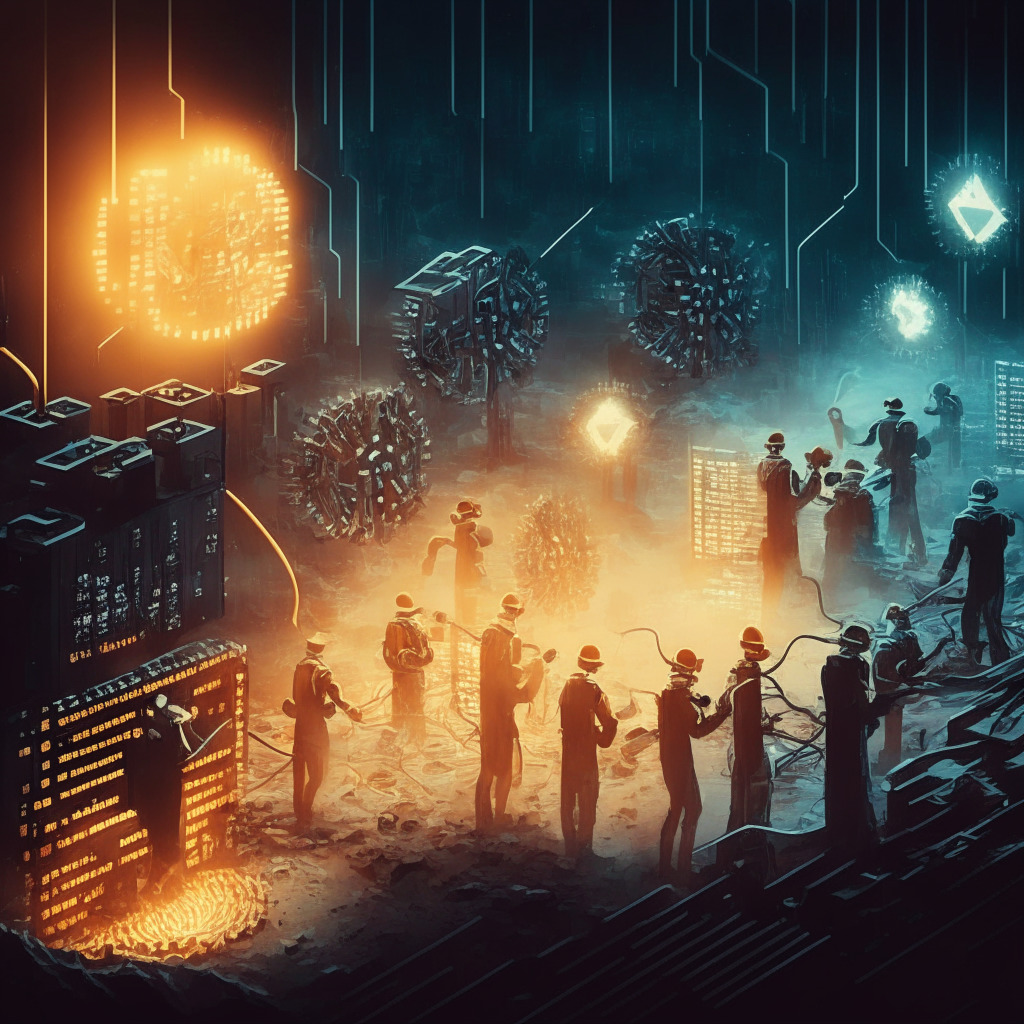Bitcoin miners have been facing an uphill battle lately, with five consecutive difficulty increases taking a toll on their operations. However, a ray of hope emerged on May 4, 2023, when the network difficulty level finally experienced a slight dip of 1.45% at block height 788,256, bringing the overall difficulty down to 48.01 trillion for the next two weeks.
This drop in difficulty follows a series of increases since February 24, totaling a 22.62% overall rise, and comes as a welcome relief for miners. The Bitcoin network’s hashrate is currently at 355.90 exahash per second (EH/s). Interestingly, just two days prior, the network witnessed an all-time high of 491 EH/s at block height 787,895, showcasing the constant fluctuations and challenges in the crypto mining industry.
However, the recent dip is not all sunshine and roses, as miners are still dealing with block times above the ten-minute average, with the last recorded interval being ten minutes and 49 seconds. This is further complicated by the fact that the network’s mempool is clogged with over 200,000 unconfirmed transactions, waiting for their turn to be processed. To speed up the process, users are dishing out high-priority fees of $5.05 per transaction, while medium-priority transfers cost $4.61.
In light of this situation, mining pools have been showing interesting dynamics, with Foundry USA enjoying the lion’s share of 96.62 EH/s of hashpower (27.17% of Bitcoin’s total hashrate). Behind them are Antpool (80.38 EH/s), F2pool (48.72 EH/s), Binance Pool (38.16 EH/s), and Viabtc (27.61 EH/s), demonstrating the intense competition in the sector.
With the next difficulty adjustment set to occur on May 18, 2023, miners are preparing for an uncertain future. The million-dollar question remains: will Bitcoin’s difficulty level keep rising steadily or can we expect more dips along the way? Factors in play include the ongoing expansion of the mining pool landscape, the increasing demand for transactions, and potential changes in the Bitcoin network’s overall health.
Despite the recent dip in difficulty, the cryptocurrency mining industry remains a challenging field, with miners continuously adapting to network fluctuations and intense competition. As the space merits constant attention and analysis, stakeholders within the community must continue observing these developments closely to prepare for any shifts that may occur. And as always, only time will tell how these trends will unfold in the coming months.
Source: news.bitcoin.com




